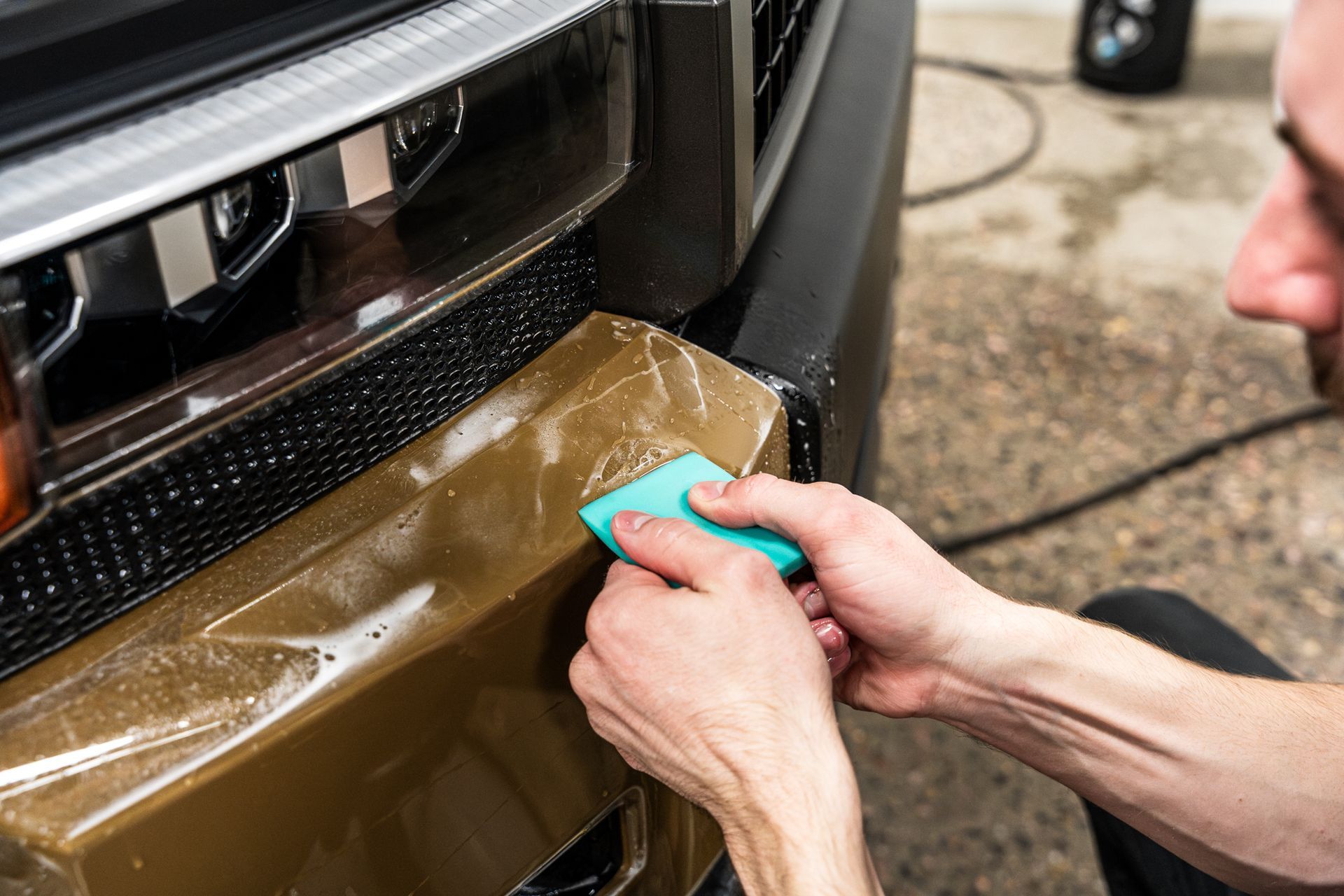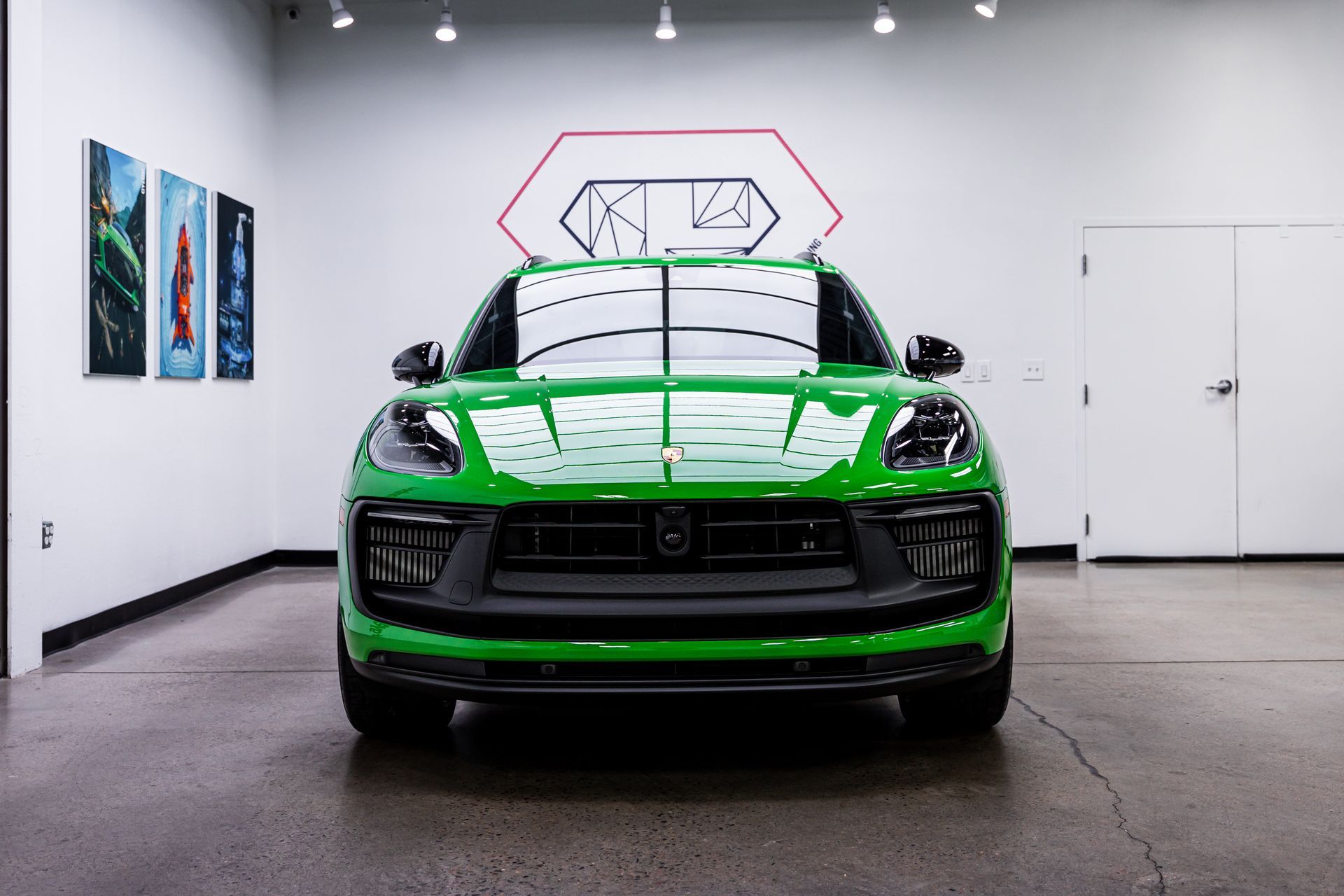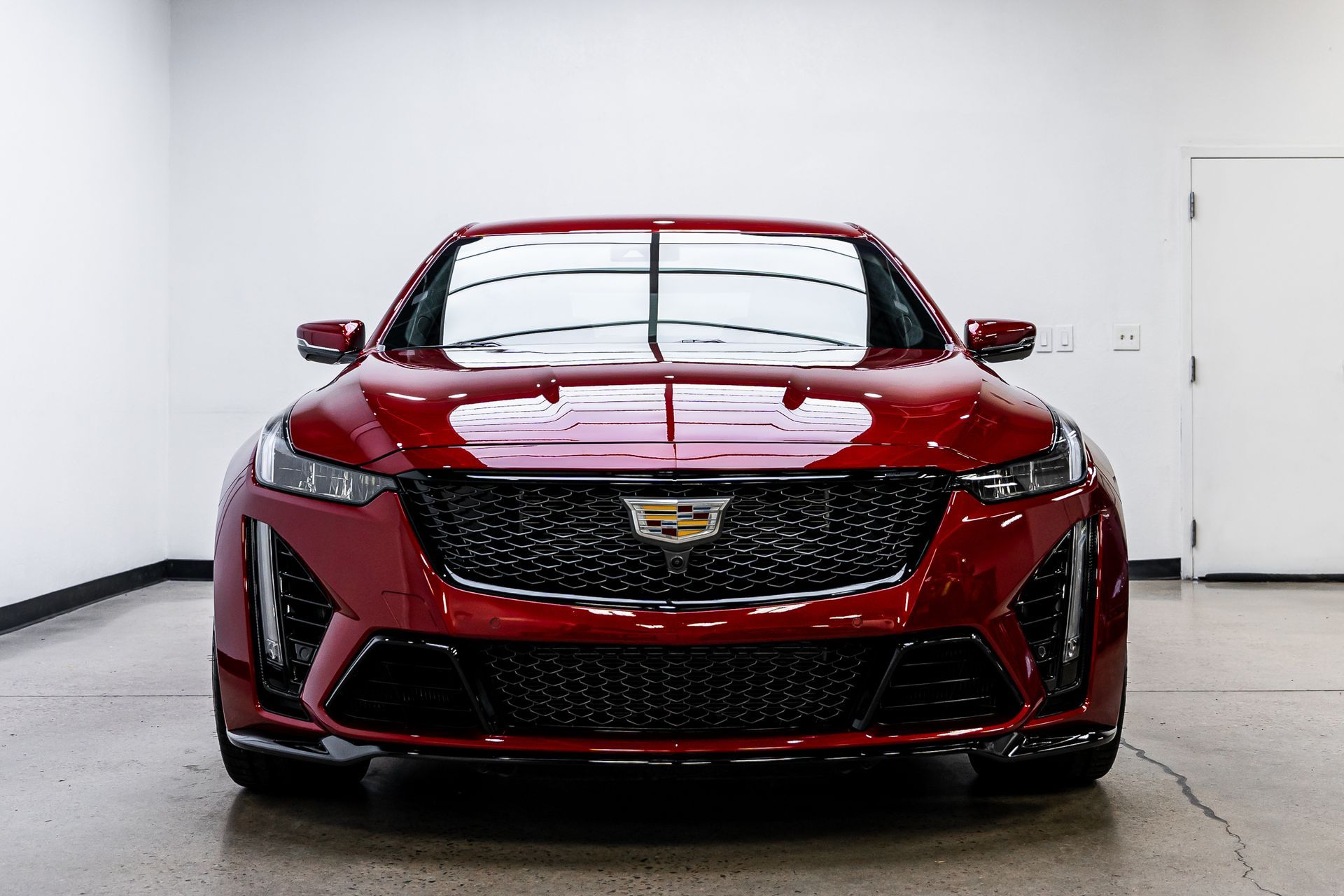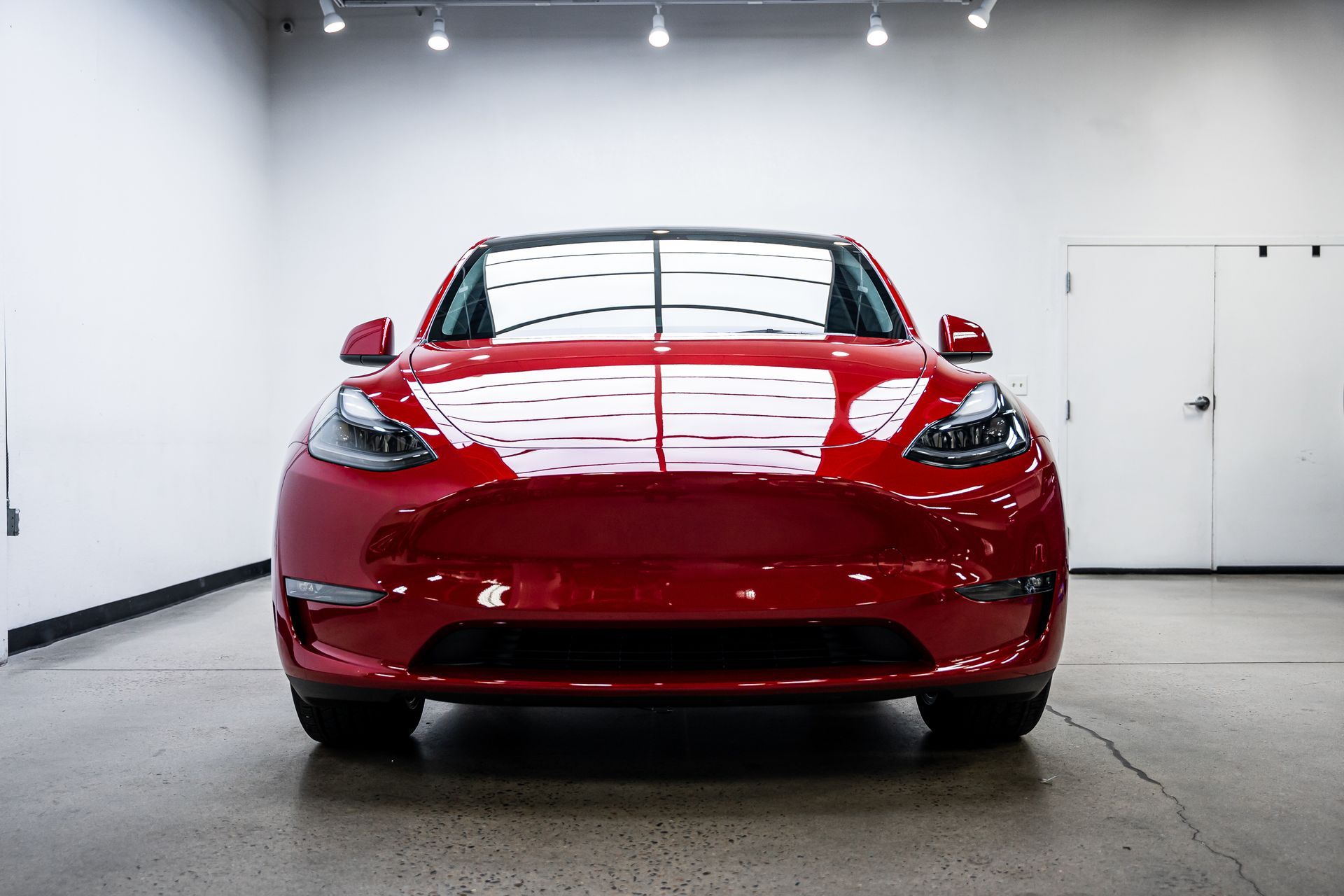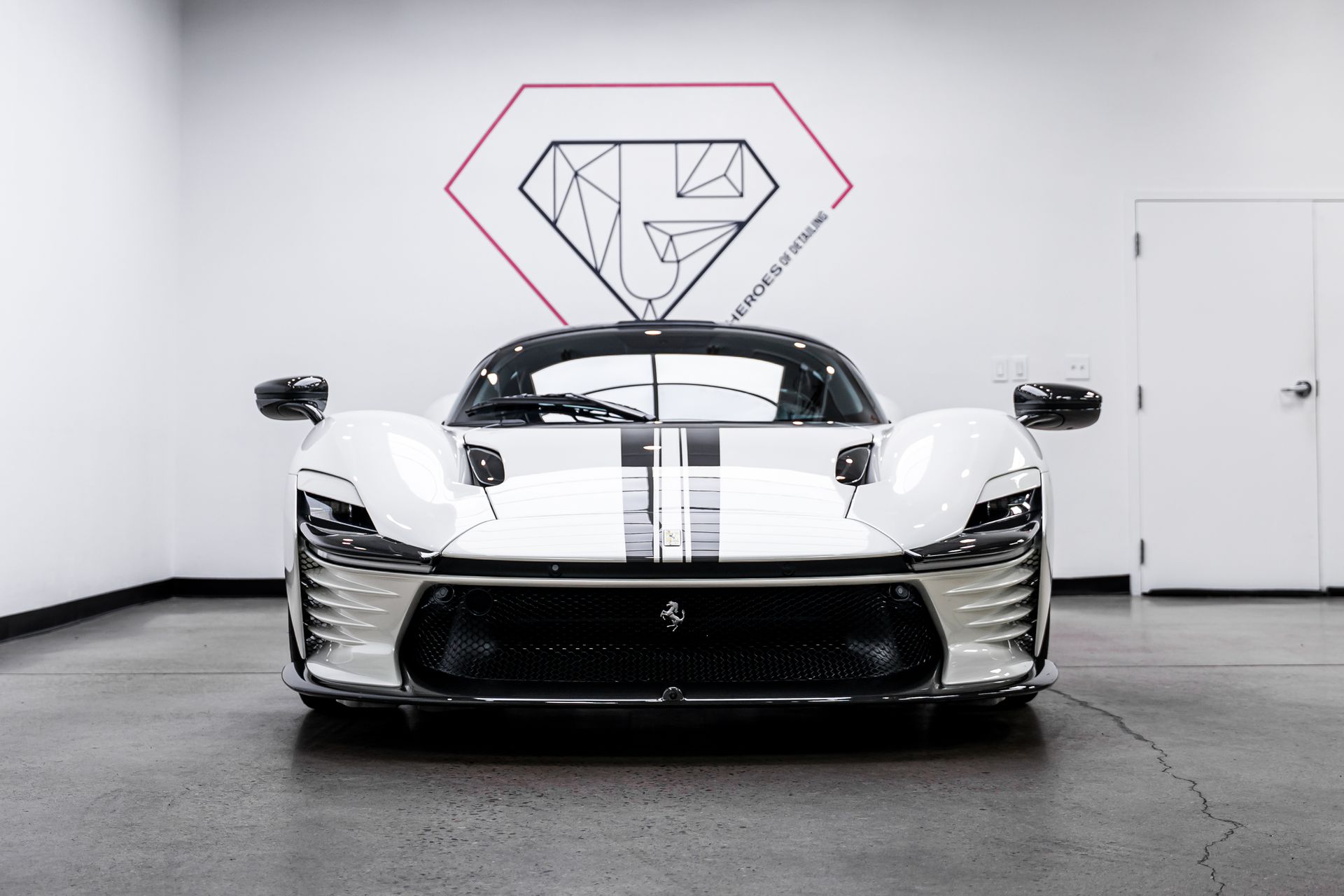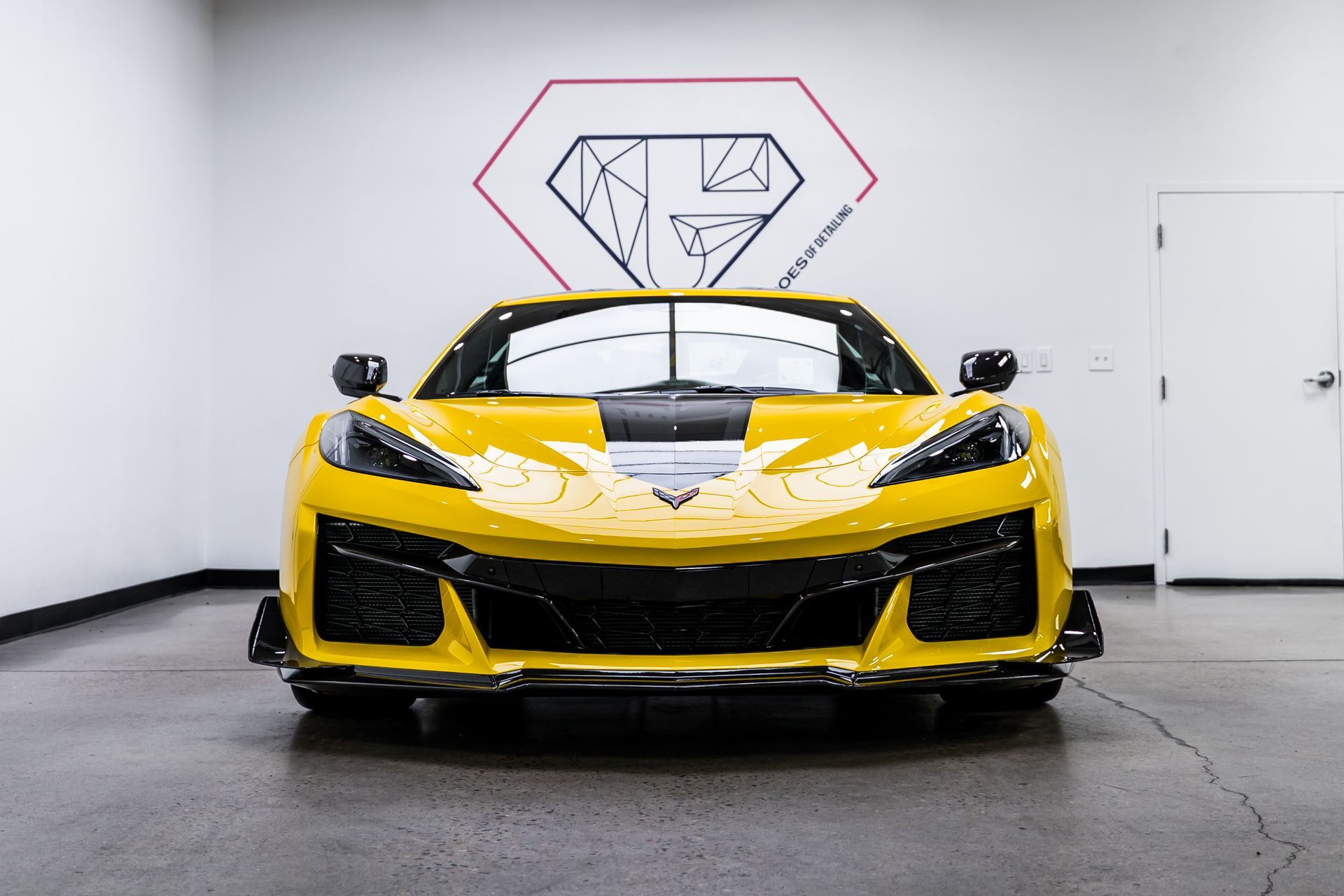What Is Paint Protection Film? How Does It Work and Its Benefits
CALL (720) 662-8520
GET A FREE ESTIMATEWhen you invest in a vehicle, it’s not just about getting from point A to point B; it's about protecting your ride's look and value for the long haul. If you've ever watched in horror as a tiny rock chip marred that shiny paint job, you know how important protection can be. That’s where paint protection film, or PPF, comes into play. This amazing product acts like a shield for your car, saving it from scratches, chips, and other wear and tear that life throws at it. Let’s dive into what PPF is, how it works, and why it could be one of the smartest choices you make for your vehicle's longevity and appearance.
Paint protection film (PPF) is a transparent polyurethane film applied to the surface of a vehicle to shield its paint from damage such as scratches, rock chips, and UV exposure. It works by absorbing and dispersing impact energy while conforming to the vehicle's contours, ensuring complete coverage and maintaining the aesthetic appeal of the vehicle over time.
What is Paint Protection Film?
Paint protection film, commonly referred to as PPF, is a sophisticated protective shield for your vehicle. Made primarily from high-quality thermoplastic urethane, this film clings tightly to your car's painted surfaces, creating an invisible barrier against the elements. Imagine a superhero suit for your car—robust yet discreet—that fights off damaging particles like road debris, rock chips, and minor scratches as they approach. Every time you hit the road, you’re in a battle against wear and tear.
Material Composition
Think of paint protection film as a second skin for your vehicle. Its material composition includes urethane or polyurethane, known for their durability and flexibility—qualities essential for enduring the daily grind our cars face. This construction helps PPF maintain its integrity even under harsh conditions, such as extreme weather or aggressive driving. Available thicknesses range between 6 and 8 mils, allowing this film to meet different protection needs depending on how rough you get with your ride.
Applications
The beauty of paint protection film lies in its versatility. It's customarily applied in critical areas most susceptible to damage, including the hood, fenders, side mirrors, and front bumpers. Imagine driving through a gravelly road without worrying about stone chips; that's the peace of mind PPF brings.
- Hood: Keeps the paint beneath safe from flying debris.
- Fenders: Protect against pesky bumper dings while parking.
- Side Mirrors: Shields from adjacent car doors and unexpected branches.
- Front Bumpers: Guards against bug splatters and impacts from road hazards.
Customization
Since no two cars are alike, customization is key with PPF. Many products are pre-cut to fit specific vehicle models flawlessly, ensuring every inch of your paint job is protected without unsightly wrinkles or bubbles that could arise from poorly placed film. It’s all about achieving that perfect fit to enhance both the safety and appearance of your car while maintaining its resale value. Popular brands offer various grades of this protection film tailored to diverse needs and budgets—ensuring that whether you're looking for basic protection or something more premium, there's an option just for you.
With an understanding of what PPF is and its applications for safeguarding paint, we can now explore how this remarkable product operates and its benefits for enhancing your vehicle's longevity.
How Does Paint Protection Film Work?
The functionality of paint protection film is rooted in its sophisticated layer structure, meticulously engineered for maximum defense against various environmental hazards. At first glance, PPF may look like just a thin sheet of clear material, but there’s much more happening beneath the surface.
- Top Coating: This initial layer provides a clear gloss finish that enhances the vehicle's appearance while also acting as a shield against ultraviolet rays. Without this layer, the sun could gradually degrade the film, allowing the paint underneath to fade and lose its luster. It essentially keeps your car looking new, even after years of exposure.
- Urethane Film: Beneath the top coating lies the core layer composed of urethane. This material is vital because it absorbs impacts from rocks, road debris, and scratches. When these external forces hit the film, the urethane is designed to stretch and absorb that energy effectively rather than allowing it to penetrate and damage the paint beneath.
- Adhesive Layer: Finally, there's an adhesive layer that bonds the paint protection film securely to the vehicle's surface. This strong adhesion is crucial—it ensures that even under duress from weather changes or car washes, the PPF stays put while being easily removable if need be, without harming the original paint job.
When a stone strikes the film, imagine not just one point of impact but rather an entire wave dispersing across a larger area. The top layer initially cushions this blow; however, it's actually the urethane film below that meticulously redistributes and mitigates this force across its expanse. By doing so, it prevents any concentrated pressure from chipping or scratching your vehicle's beautiful finish. For optimal results when applying PPF, consider professional installation. Skilled technicians can ensure a seamless fit with no bubbles or peeling edges. A proper installation allows each layer to function as intended, maximizing both aesthetics and protection.
Benefits of Paint Protection Film
Paint protection film offers a powerful way to preserve your vehicle’s appearance and value. With advancements in automotive technology, this clear, durable film has become a go-to solution for drivers who want to protect their investment from daily hazards.
- Impact Resistance: PPF is engineered to absorb and disperse the energy from road debris like gravel, pebbles, and sand. This means fewer chips, dings, and scratches when driving behind trucks or on rough roads. Instead of letting rocks scar your paint, the film acts as a barrier that protects the factory finish. It’s a reliable shield against unexpected damage during everyday drives.
- UV Protection: High-quality paint protection film also blocks harmful ultraviolet rays from the sun, which can oxidize and fade your car's paint over time. By reducing sun exposure, it helps maintain your vehicle’s original color and shine for years. This benefit is especially valuable for darker-colored vehicles, which tend to show fading more visibly. With PPF, you can enjoy a consistently vibrant exterior, even in harsh climates.
- Self-Healing Properties: One of the most fascinating features of modern PPF is its ability to self-heal minor scratches. When exposed to heat—either from sunlight or a heat gun—the film’s surface reverts to its original smooth state. This is perfect for minor blemishes caused by brushing against branches or other small abrasions. It keeps your vehicle looking fresh without needing constant paint corrections.
- Long-Term Durability: PPF offers an extended lifespan of 5 to 10 years when properly maintained, providing continuous protection against environmental damage. It's a cost-effective solution in the long run, as it reduces the need for frequent touch-ups or paint repairs. Drivers often find that the upfront investment pays for itself through minimized maintenance costs. It’s a smart choice for anyone who values both performance and aesthetics.
The benefits of paint protection film go far beyond surface-level appeal—it’s a comprehensive safeguard for your vehicle. From resisting damage to enhancing longevity, PPF is an intelligent investment for anyone serious about preserving their car’s value and appearance.
Maintenance Tips for PPF
Proper care is key to preserving the appearance and durability of your paint protection film. Routine maintenance helps you get the most out of your investment while keeping your vehicle looking its best. Below are essential tips to maintain your PPF and avoid common issues.
- Wash Your Vehicle Regularly by Hand: Hand-washing your car with mild soap and water removes dirt and grime that naturally build up. It may take more time than automated methods, but it’s a gentler approach that won’t compromise the film. High-pressure washers, although convenient, can lift the film at the edges and cause peeling or bubbling. By hand washing, you also get the chance to inspect the film for any damage or signs of wear.
- Avoid Harsh Cleaning Chemicals: Use only pH-balanced cleaners that are safe for paint protection film. Many over-the-counter cleaners contain strong chemicals that can weaken or discolor the film over time. Solvent-based products may cause yellowing or cloudiness, diminishing the film's clarity and protection. Always check the label to ensure the product is PPF-compatible.
- Be Mindful of Environmental Exposure: Although PPF offers strong protection, it’s still important to reduce unnecessary exposure to harsh conditions. Parking in shaded or covered areas can limit damage from UV rays and acid rain, which may accelerate wear over time. Regularly removing bird droppings, bug splatter, or tree sap also prevents staining and etching. Quick attention to these contaminants keeps the film in optimal condition.
By following these simple maintenance steps, your paint protection film can continue to perform at its best for years. A little time and attention now can prevent costly repairs or replacements later.
Is PPF Worth the Investment?
When considering PPF, it’s essential to think of it as not just a transaction but an investment in your vehicle's longevity and appearance. For many drivers, especially those with luxury or performance vehicles, investing in PPF can significantly improve resale value. If your car’s paint remains pristine due to the protective layer of PPF, potential buyers are more likely to pay top dollar when it comes time to sell. Even for everyday cars, maintaining the original finish can save owners from expensive repairs down the line.
Now, let’s examine the financial perspective. A full wrap of PPF typically costs between $2,000 and $7,000. While that might sound steep at first glance, it's crucial to compare this expense against the potential costs of paint repairs or repainting a vehicle completely—often exceeding $5,000 for quality work. This means that for many, PPF is actually a cost-effective alternative rather than an unnecessary expense. It's about weighing short-term costs against long-term benefits.
Ultimately, while the initial investment may seem formidable for some drivers, the peace of mind and savings on potential repairs can make PPF a smart choice for anyone serious about vehicle care. If you value maintaining the aesthetic integrity of your car and wish to avoid costly repairs down the line, investing in PPF may very well be worth every penny.
Choosing to apply paint protection film is not merely a decision based on cost; it's about ensuring the longevity and beauty of your vehicle while also safeguarding its resale value. The choice becomes clearer when you weigh the long-term benefits against initial expenditures.
Expert PPF Installation in Golden, CO
At Denver Auto Shield, we understand that your vehicle deserves the best protection against road debris, scratches, and environmental damage. Our premium paint protection film services offer an invisible shield that keeps your car looking pristine while maintaining its resale value. Whether you’re driving through the streets of Golden or exploring the scenic beauty of Colorado, our expert installation ensures lasting durability and a flawless finish. Trust our team to provide
high-quality PPF in Golden, CO, that keeps your vehicle’s paint looking brand new for years to come. Get in touch today to discover how we can protect your investment!
Call us at (719) 849-6075 to get started!

